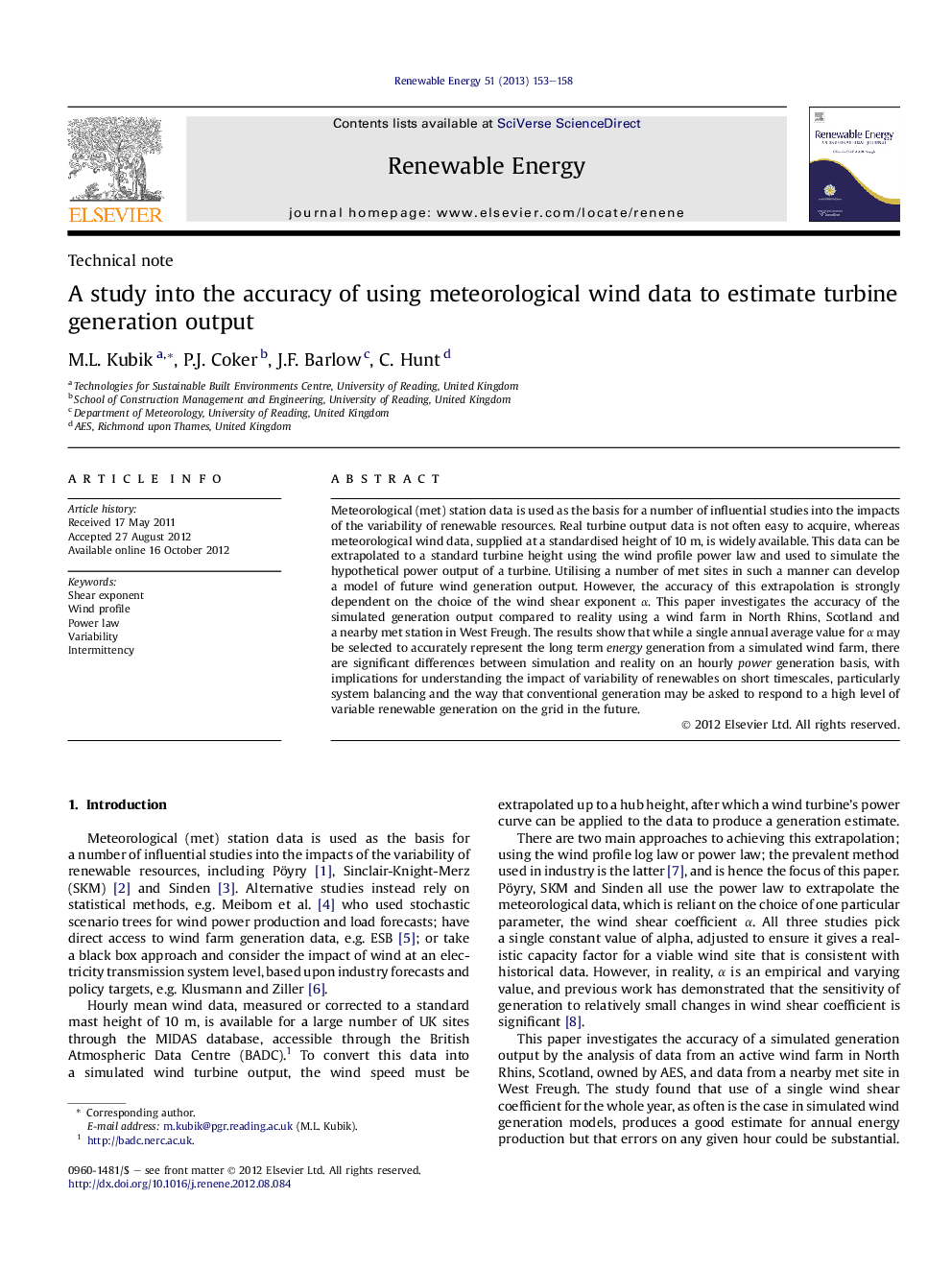| کد مقاله | کد نشریه | سال انتشار | مقاله انگلیسی | نسخه تمام متن |
|---|---|---|---|---|
| 300613 | 512486 | 2013 | 6 صفحه PDF | دانلود رایگان |

Meteorological (met) station data is used as the basis for a number of influential studies into the impacts of the variability of renewable resources. Real turbine output data is not often easy to acquire, whereas meteorological wind data, supplied at a standardised height of 10 m, is widely available. This data can be extrapolated to a standard turbine height using the wind profile power law and used to simulate the hypothetical power output of a turbine. Utilising a number of met sites in such a manner can develop a model of future wind generation output. However, the accuracy of this extrapolation is strongly dependent on the choice of the wind shear exponent α. This paper investigates the accuracy of the simulated generation output compared to reality using a wind farm in North Rhins, Scotland and a nearby met station in West Freugh. The results show that while a single annual average value for α may be selected to accurately represent the long term energy generation from a simulated wind farm, there are significant differences between simulation and reality on an hourly power generation basis, with implications for understanding the impact of variability of renewables on short timescales, particularly system balancing and the way that conventional generation may be asked to respond to a high level of variable renewable generation on the grid in the future.
► In this study we investigated extrapolating hub wind speeds from 10 m met mast data.
► Real wind farm data is compared to simulated data from a nearby met mast.
► The results show that a single α can estimate annual energy accurately.
► Individual hourly errors, however, are often large.
► We conclude there are implications for understanding renewable variability at short timescales.
Journal: Renewable Energy - Volume 51, March 2013, Pages 153–158